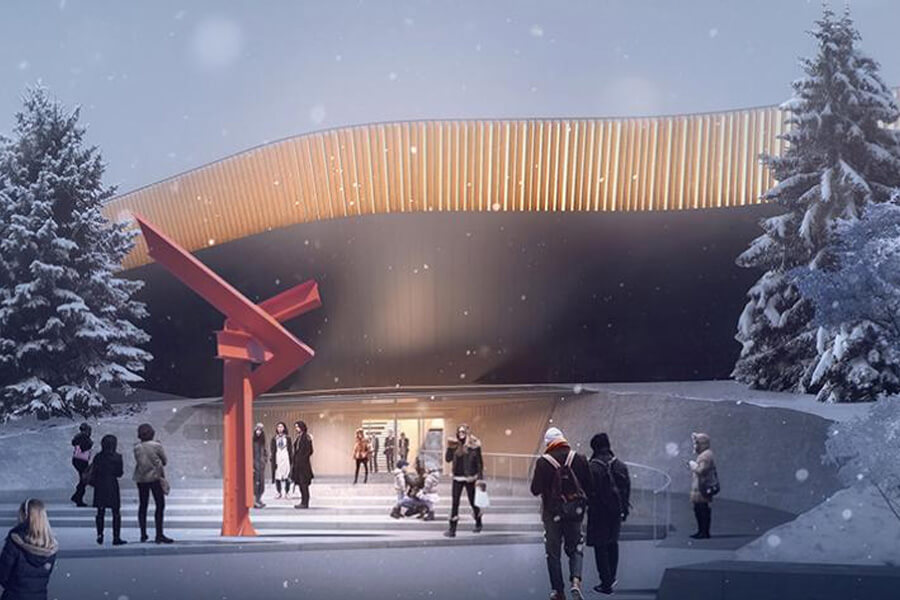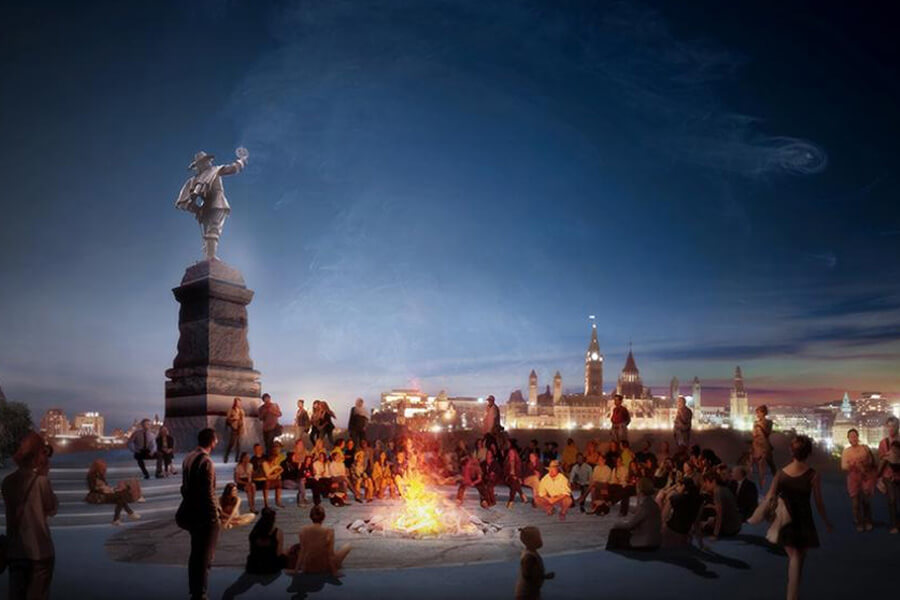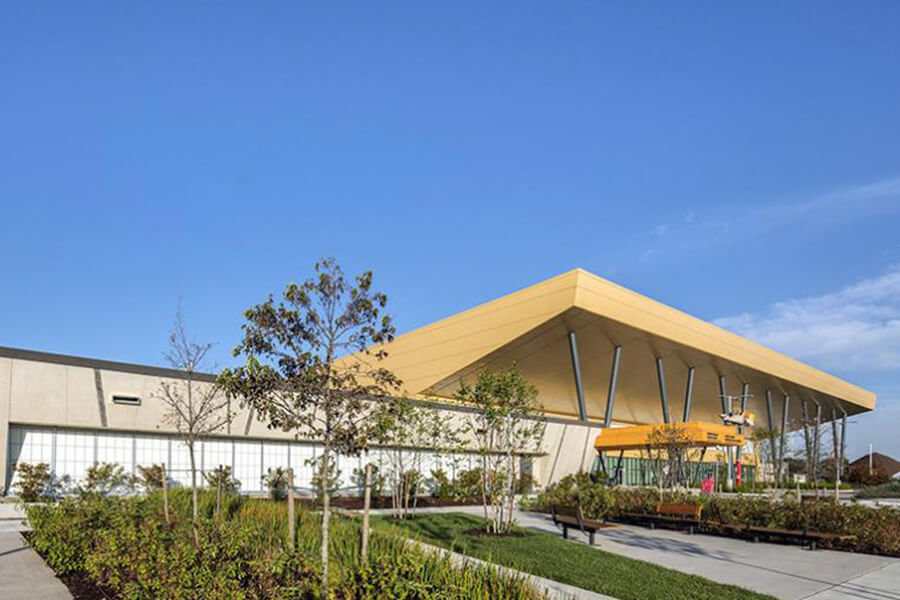
The Canadian Canoe Museum
International Design Competition
Client
The Canadian Canoe Museum
Location
Peterborough, Ontario
2015
Shortlisted Finalist
Design Team
5468796 Architecture Inc. with Moriyama & Teshima Architects (Lead, Design Architect)
Janet Rosenberg & Studio (Landscape Architect)
Blackwell (Structural Engineer)
Photography Credit: Renderings by 5468796 Architecture Inc.
5468796 Architecture Inc. with Moriyama & Teshima Architects led this shortlisted strategy for The Canadian Canoe Museum International Design Competition.
JRS collaborated with the team on an integrated landscape strategy for the unique site situated adjacent to the historic Peterborough Lift Locks and along the bank of the Trent Severn Canal. The landscape design was used to reinforce a connection to the narrative of the canoe and the history of Canada, providing an opportunity for people to interact with water’s edge and experience the magical feeling of paddling a canoe. Landscape spaces also accommodated flexible spaces for education, children’s play and other events.
“Experiencing the new CCM is inspired by the story of the canoe, its ingenuity and efficiency, its beauty and serenity, and its ability to elicit a personal response in all of us. The reimagined CCM transforms a formerly land-locked structure into an evocative pavilion in a clearing, engulfed by the landscape that cascades through the site and connects the museum with its primary companion – water.
A choreography of landscape elements, access points and new public spaces weave the building with the site, allowing visitors to engage the museum from all directions. The museum is intentionally organized on two levels to shorten the distance between different program components and leave more room on the site for outdoor use. Strategically positioned transparent walls expose the interior spaces and select artifacts, creating an external animation and renewed engagement with the museum at all hours.
Together, the various landscape elements inspire a strong atmospheric identity for the site, an organic and tranquil habitat defined by the play of natural light and shadow through the trees, the restless murmur of water below and the sound of birds singing in the branches above.
On the exterior, an economical building envelope is veiled by a metallic mesh shroud that mediates the boundary condition between museum and landscape. The skin acts as a natural shading device, tempering climatic conditions while allowing a diffused light penetration to animate the interior spaces, inspired by the interplay of shade and shadow on a woodland site. Like a cloth draped over a tabletop, the mesh is malleable and acts to conceal the simple building form, as well as the mechanical units and loading docks. The mesh is then strategically lifted to reveal views, define entrance points and shelter outdoor terraces from the elements.”







